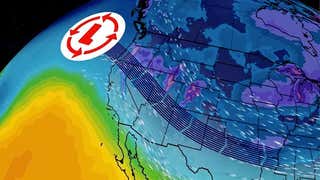

US
°C





Spiky sea slugs, known as Hopkins' rose nudibranch, are invading northern California's coast in large numbers, and scientists believe changes in the ocean's temperatures are to blame.
These flower-like sea slugs, known as Hopkins' rose nudibranch, are appearing in massive numbers in Northern California's waters.
(Jeff Goddard/University of California Santa Barbara's Marine Science Institute )
The vibrant, pink sea slugs are common in tide pools near Los Angeles and San Diego, but now as Humboldt County, California.
(MORE: )
Researchers from the University of California, Santa Cruz say that warmer ocean temperatures are driving the sea slugs north in search of more comfortable waters.
A news release from the university explained that nudibranch haven’t been this denslypopulated, at dozens per square meter,since 1998.
“We haven’t seen anything like it in years. These nudibranchs are mainly southern species, and they have been all but absent for more than a decade,” said John Pearse, professor emeritus of ecology and evolutionary biology at UC Santa Cruz.
Nate Mantua, a climate scientist at NOAA, spoke to SFGate on the above-average temperatures measured off the California coast this year. This winter, , compared to the normal range of 52 to 53 degrees.
“It’s the same weather pattern that’s kept the rain from coming,”Mantua said, “causing the drought we’re seeing on land.”
MORE ON WEATHER.COM: Stunning Photos of Sea Slugs Up Close












